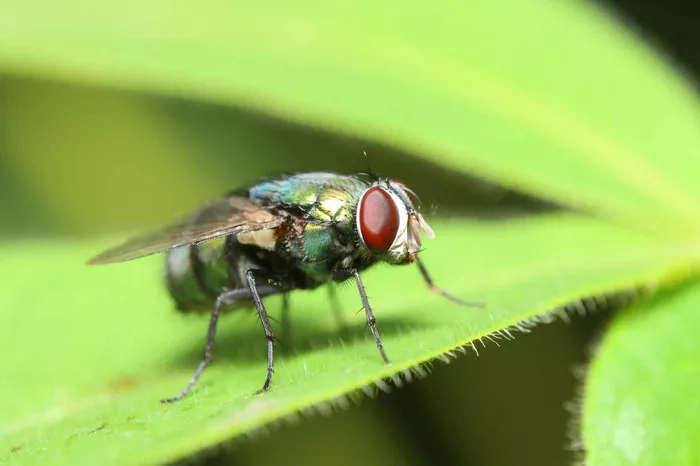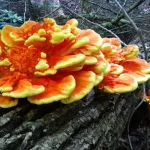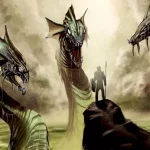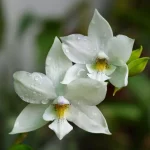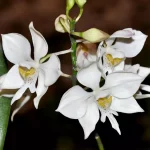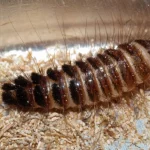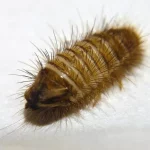The fly, a small and seemingly insignificant creature, is often associated with negativity and pestilence due to its presence around decay and dirt. However, in various spiritual and cultural contexts, the fly has deeper symbolic meanings that go beyond its nuisance-like nature. It can represent resilience, transformation, and adaptability, as well as having connections to messages from the spiritual realm.
In this article, we will explore the spiritual meaning of the fly, how the fly is symbolized in different countries, its symbolism in different colors, what it represents in dreams, and the myths and legends that surround this commonly misunderstood insect.
Fly Spiritual Meaning
The spiritual meaning of the fly is multifaceted, with interpretations that range from resilience and adaptability to the embodiment of pestilence and decay. Flies are often overlooked due to their unpleasant associations, but they also carry important spiritual messages about survival, transformation, and the cycles of life.
Symbol of Persistence and Survival
One of the most prominent spiritual meanings of the fly is persistence. Despite being swatted away or driven off, flies always return, demonstrating a remarkable ability to survive. This tenacity is a symbol of the human capacity to endure challenges and overcome obstacles. The fly reminds us that no matter how difficult life gets, we can always find a way to keep going, even in the most unfavorable conditions.
In this context, the fly serves as a symbol of resilience, showing that even the smallest and most insignificant beings have the power to thrive. It encourages individuals to embrace their strength and use their inner resources to persist in the face of adversity.
Adaptability and Change
Flies are highly adaptable creatures, capable of thriving in a wide range of environments, including those that are inhospitable to many other animals. Spiritually, this adaptability represents the importance of being flexible and open to change. The fly encourages people to embrace change, even when it is uncomfortable, as change often brings growth and new opportunities.
In this sense, the fly symbolizes transformation. Much like how flies play a role in breaking down and recycling decaying matter, they remind us that even in times of destruction or decay, new beginnings and transformation are possible. The fly’s presence can serve as a sign that change is necessary, and by adapting to these changes, we can experience personal or spiritual growth.
Connection to Death and Decay
On the darker side of fly symbolism, the insect is frequently associated with death, decay, and decomposition. Flies are often seen around decaying organic matter, which connects them to the inevitable cycle of life and death. In spiritual terms, this association with death is not necessarily negative; instead, it represents the cyclical nature of life—the idea that death is not the end but a transformation into something new.
Spiritually, the fly reminds us that death, both literal and metaphorical, is a necessary part of life. Endings give way to new beginnings, and decay allows for renewal. In this way, the fly can be a symbol of regeneration and the importance of letting go of what no longer serves us to make room for growth and transformation.
See Also: 45 Fly Quotes, Sayings, and Proverbs
Fly Symbolism (In Different Countries)
The symbolism of flies varies across different cultures and regions, with some seeing them as harbingers of doom and others interpreting them as symbols of resilience, transformation, or spiritual messages. Here is a look at how flies are symbolized in various countries and cultures:
Fly Symbolism in Ancient Egypt
In Ancient Egypt, the fly was seen as a symbol of bravery and persistence. Warriors who displayed remarkable tenacity in battle were often compared to flies, which could not easily be swatted away. The fly, with its ability to continue flying despite being shooed, became a representation of steadfastness and determination.
There were even fly-shaped amulets made in Ancient Egypt, worn by soldiers as talismans to give them courage and endurance in battle. These amulets were believed to bring protection and persistence, much like the qualities the fly itself embodied.
Fly Symbolism in Christianity
In Christian symbolism, flies are often associated with pestilence, sin, and decay. This negative interpretation comes from the fly’s close relationship with death and decay. In some interpretations, flies are seen as representations of temptation and sin, as they are attracted to filth and unclean environments.
One notable example of fly symbolism in Christianity is the figure of Beelzebub, whose name is often translated to mean “Lord of the Flies.” Beelzebub is one of the demons mentioned in Christian texts, and the association with flies highlights his connection to corruption and decay, reinforcing the negative connotations of flies in Christian symbolism.
Fly Symbolism in Native American Culture
In some Native American cultures, flies are seen as tricksters or messengers. While often associated with nuisance, they can also bring important spiritual messages. The presence of a fly might indicate that it is time to pay attention to something overlooked or that an important change is about to occur.
Some Native American tribes also believed that flies had the ability to carry messages between the living and the spirit world, making them symbols of communication and spiritual guidance.
Fly Symbolism in African Folklore
In many African cultures, flies are linked to death and the spirit world. Because flies are often found near decomposing bodies or waste, they are believed to act as harbingers of death or carriers of messages from the spirit world. In some traditions, the appearance of a fly is a sign that the ancestors are near, delivering guidance or warnings from the spiritual realm.
However, despite their association with death, flies are also viewed as symbols of transformation, much like in other cultures. Their role in breaking down and decomposing matter is seen as a vital part of the life cycle, ensuring that life continues after death.
Fly Symbolism (With Different Colors)
While most people think of flies as simple, black insects, they come in a variety of colors, each with its own symbolic meaning. The color of the fly can add depth to its symbolism, giving additional layers of meaning based on its appearance.
Black Fly Symbolism
The black fly is often associated with death, darkness, and the unknown. Because of its color and its connection to decay, a black fly might symbolize the shadow aspects of life, such as fear, the subconscious, or the inevitability of death. While this might seem negative, the black fly also represents the idea of confronting our fears and accepting the darker aspects of life in order to grow spiritually.
In some cases, a black fly can be a reminder to focus on areas of life that are being neglected or ignored. Just as flies are drawn to decay, the presence of a black fly may indicate that there is an aspect of life that needs attention and healing.
Green Fly Symbolism
The green fly, or blowfly, is connected to healing and transformation. Green is often a color associated with growth, renewal, and life, and while blowflies are typically seen around decay, they play a crucial role in breaking down matter to allow for new growth.
Spiritually, a green fly represents the idea of rebirth and the transformation that comes from letting go of the old to make way for the new. It reminds us that even in times of decay or hardship, healing and growth are possible.
Blue Fly Symbolism
The blue fly, or bluebottle fly, is often associated with communication and clarity. Blue is a color linked to the throat chakra, which governs communication, truth, and expression. A blue fly might symbolize the need to speak your truth or to clear up any misunderstandings in your life.
In some spiritual traditions, the appearance of a blue fly can also be a sign that you are being guided to express your thoughts and emotions more openly. It may be a reminder to clear away any negative energy or unresolved issues that are blocking your ability to communicate effectively.
Fly Symbolize in Dreams
Dreams about flies can carry a range of meanings, depending on the context of the dream and the dreamer’s own associations with the insect. While flies are often seen as unpleasant or unwanted creatures, their appearance in dreams can offer valuable insights into one’s emotional state, challenges, and personal growth.
Seeing Flies in a Dream
If you dream of seeing flies, it may symbolize annoyances, frustrations, or small problems that are currently bothering you. Flies in dreams often represent things that are “bugging” you in your waking life—issues that may seem minor but are persistent and difficult to ignore.
Alternatively, flies can also symbolize distraction or the inability to focus. The constant buzzing of flies can mirror feelings of mental clutter or the sense that something is preventing you from achieving clarity or peace of mind.
Swatting Flies in a Dream
Dreaming of swatting flies can symbolize your desire to overcome challenges or get rid of things that are bothering you. This dream may reflect a situation in your life where you are trying to remove negative influences or solve persistent problems.
On a deeper level, swatting flies in a dream can also represent a desire for control. You may feel overwhelmed by small but nagging issues, and the dream is a reflection of your effort to regain control over your life and circumstances.
Flies Buzzing Around You in a Dream
Dreams of flies buzzing around you can indicate feelings of anxiety or agitation. The incessant buzzing of flies in a dream may reflect a situation in your waking life that is causing stress or unease. This dream might be a message that it’s time to address these underlying issues before they grow into larger problems.
In some cases, flies buzzing around you in a dream can also symbolize a sense of powerlessness. You may feel that certain problems or annoyances are beyond your control, and the dream is urging you to find a way to regain your sense of empowerment.
THE Myths and Legends About Fly
Flies have been the subject of myths and legends in various cultures, often carrying both positive and negative symbolism. In many myths, flies are associated with death, decay, and the spirit world, but they can also symbolize resilience, transformation, and the cycle of life.
Beelzebub and the Fly
In Christian mythology, Beelzebub is often referred to as the “Lord of the Flies,” a demon associated with pestilence, corruption, and sin. This association comes from the fly’s connection to death and decay, as Beelzebub is seen as a corrupting force that preys on the weak and the dead.
The figure of Beelzebub highlights the negative aspects of fly symbolism, reinforcing the insect’s connection to filth, disease, and spiritual degradation. However, this mythology also serves as a reminder of the importance of avoiding temptation and corruption in one’s spiritual journey.
Fly as a Symbol of Transformation
In many cultures, the fly’s role in the decomposition process is seen as a symbol of transformation and renewal. While flies are often associated with death, they also play a crucial role in breaking down organic matter, allowing for new growth and regeneration.
In this sense, the fly is a symbol of the cycle of life, reminding us that death is not the end but a necessary part of the natural order. Through decay and decomposition, new life can emerge, and the fly’s presence in myths and legends often reflects this transformative power.
Fly as a Trickster Figure
In some Native American myths, flies are portrayed as trickster figures, representing mischief, cunning, and the ability to outwit others. Flies, with their persistence and agility, are seen as clever creatures that can outmaneuver larger and more powerful beings.
These myths often depict flies as both a nuisance and a symbol of intelligence, reminding us that even the smallest and most insignificant creatures have the ability to survive through wit and cunning.
Conclusion
The symbolism of the fly is complex, encompassing both negative and positive meanings across different spiritual and cultural contexts. While often associated with death, decay, and pestilence, the fly also symbolizes resilience, adaptability, and transformation. Its ability to thrive in even the most challenging environments makes it a powerful symbol of survival and renewal.
In dreams, the fly can represent annoyances, frustrations, or the need for change, while in myths and legends, it embodies themes of transformation and cunning. Despite its negative connotations, the fly reminds us of the importance of confronting life’s challenges with persistence and adaptability, embracing change, and recognizing the cyclical nature of life.
Related topics:

